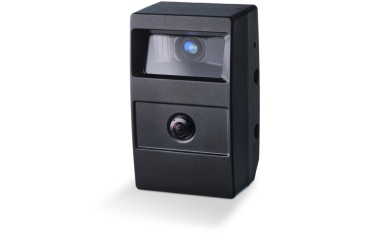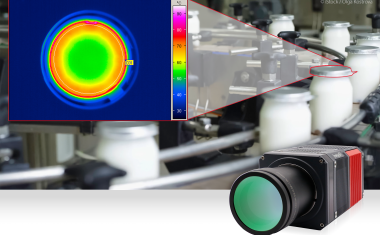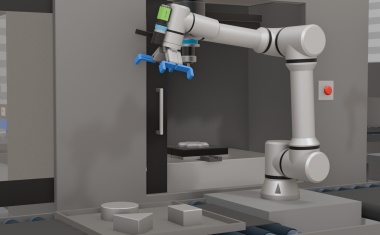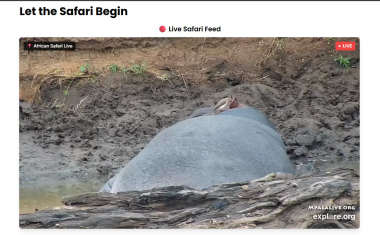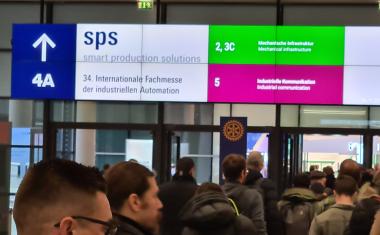Light Messages
Sensitive infrared cameras based on InGaAs detect weak electroluminescent radiation emitted by thin-film solar cells. These emit photons due to the external bias voltage and thus allow inference on the quality of the solar cells. So, micro fissures or the contamination of semiconductor layers can be inspected within a spatial resolution.
Traditional solar cells based on silicon wafers have reached impressive maturity over the last 25 years. Compared to these not much is known about the thin-film solar cell's long-term behavior under various light and weather conditions yet. But thin-film solar cells have some essential advantages compared to the traditional cells. Current studies show that the energy yield of thin-film solar cells is significantly higher. Moreover they are about a factor 100 thinner than traditional cells. The size of only a few micrometers does more than saving weight. The cells can be integrated more easily in, e. g., roofing tiles, facades of buildings and glass domes. Among the materials currently used for thin-film cells are mono-crystalline silicon (Si), copper indium gallium diselenide (CIGS), or gallium-free CIS, as well as cadmium telluride (CdTe).
The Effect of Electroluminescence
Solar cells base upon the photovoltaic effect: Radiation encountering the solar cells will be converted in electrical energy. Reversing this effect by applying an external bias voltage the cell emits light in form of electroluminescence (EL). This is because solar cells are composed of numerous pn-junctions parallel interconnected. Into these pn-junctions, the voltage injects electrons, which in part recombine with the available holes. The surplus energy exits as photons whose wavelength depends on the bandgap of the cell‘s absorber material. This bandgap energy covers the range between 0.9 and 1.7 eV which corresponds to a wavelength between 1.3 and 0.7 µm. Exactly in this range SWIR (short wavelength infra red) image sensors show their largest sensitivity. To cover even larger bandgaps and to enable parallel imaging in the visible and the IR areas, image sensors are tending to larger bandwidths: to VISWIR sensor arrays with a high spectral sensitivity at wavelengths between 0.4 and 1.7 µm.
The measured EL emission intensity of a solar cell reveals its quality. Details of mechanisms that could substantially diminish the power yield of a solar module can be detected, like micro fissures within the cell, parallel resistance effects or contamination of the semiconductor layers. Figure 1 shows a cross-section of a thin-film solar cell monolithically connected in series to the neighboring cell. Three critical areas are marked: P1, P2 and P3. In these areas humidity penetrated under the transparent and conductive oxide layers (TCO) and thereby diminished the cell‘s properties. In the area marked P1, there is a lowered parallel resistance. At P2, the ZnO/Mo contact corroded and at P3, the series resistance rises due to corrosion of the molybdenum layer.
Detecting the Electroluminescence
SWIR (Short Wavelength Infrared) sensors based on InGaAs (indium gallium arsenid) are sensitive to electroluminescence within a wavelength area of 0.9 to 1.7 µm. Figure 2 shows the design of the imager: The IR photodiode array is built on an InP epi-wafer substrate that is flip-chip mounted on a read-out integrated circuit (ROIC) in CMOS technology. The solar cell‘s exposure is then fashioned through the substrate. This however absorbs all light from the visible realm to 0.9 µm.
To prevent this loss of light, the substrate is thinned after the flip-chip mounting step: Additional layers of InGaAsP are inserted just below the photodiodes. They function as etch stops within the InP area. An HCL etch then selectively removes the InP epi-substrate exactly up to the InGaAs etch stop layer. This effectively thins the sensor chip down to just 5 µm (fig. 2, right), opening up the sensor to a broad wavelength coverage from 0.4 µm to 1.7 µm.
The weak electroluminescent emission poses high requirements on the measuring technique used. Accurate measurements will necessitate long integration times but the dark current of the image sensor is setting a limit. This influence can be reduced by employing low-noise sensors, as in the Xenics XEVA 1.7 320 camera, and by thermoelectric cooling of the sensor array. This will enable a 100-fold longer integration time and prevent weak local imperfections from getting unnoticed in the noise floor.
Put into Practice
Figure 3 demonstrates the electroluminescent radiation in the near-infrared as captured by an SWIR camera. At the outset of a corrosion test (left) the module still radiated across the entire surface. After an extended hot-steam treatment over 1,000 hours, the sample suffered - obviously due to its sub-optimal mounting - substantial TCO corrosion along the edges (right). This halves the cell‘s power yield.
Conclusion
Analyses of the weak electroluminescent emission given off by photovoltaic cells and modules not only ensure the quality in the cell's production. Also in development the given results support new findings and help to improve the thin-film technology. This will serve the overall goal of reducing the historical lead of traditional solar cells in favor of thin-film cells and developing novel power supply solutions based on the available solar energy.







